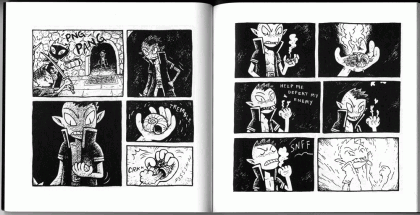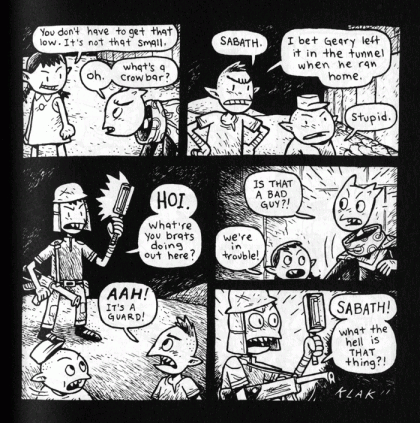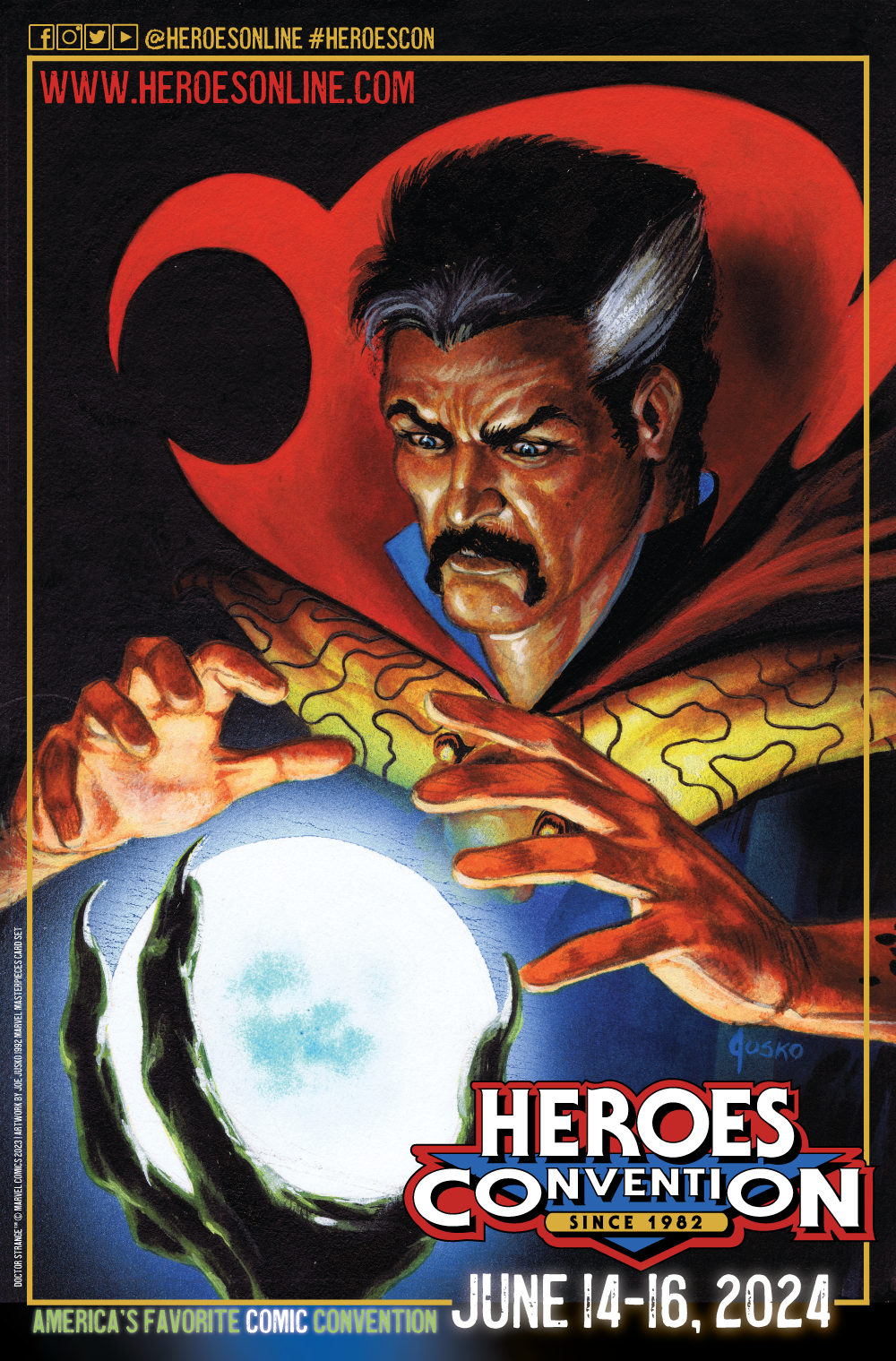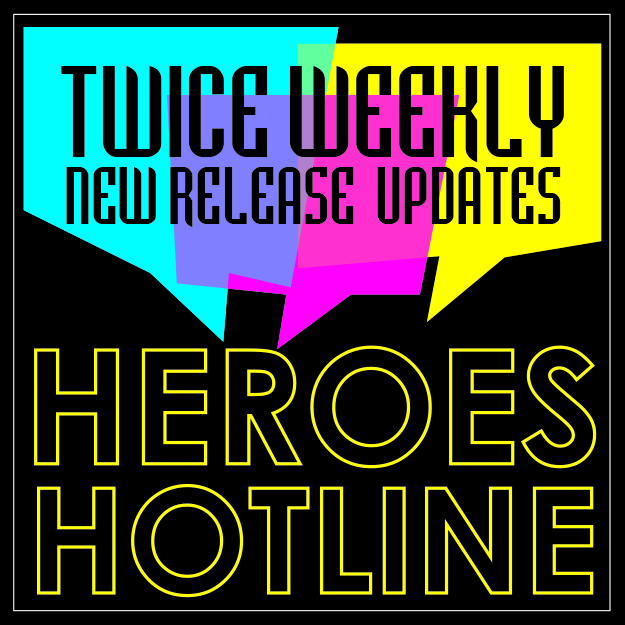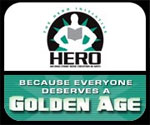FAVE 5 OF 2009 :: #3 :: THE MOURNING STAR VOL. 2
So there have been “Best of 2009″ lists and “Best of the Decade” lists flying around the internet, pretty much since Halloween or so, maybe even earlier. I don’t have time to do a longer list, or a more comprehensive one, but I thought it would be interesting to talk about my five favorite books of 2009. This list is less a “best of,” and more a “my faves;” or rather, the five books that were most important in my comics reading, whether for sheer quality or brain-busting thought-provokitude, or other content or format choices that were impressive or influential on me.
 NUMBER THREE: MOURNING STAR VOLUME 2, by Kazimir Strzepek
NUMBER THREE: MOURNING STAR VOLUME 2, by Kazimir Strzepek
I’ve made no secret of my love for Kaz Strzepek’s MOURNING STAR series. It’s not hard to explain why–it’s harder to STOP explaining why; there are so many things I love about it. But chief among them is probably that Mourning Star “is what it is,” so to speak. It’s unselfconsciously genre, a sci-fi comic set in some world’s dystopian future, laced pretty liberally with humor, childishness, violence, gore, and a surprising level of subtlety.
It’s got a cast of characters that numbers in the several dozens, none of whom can be depended on to stay living for very long–which by itself creates much of the drama of the book. These are dangerous times, anything can happen, look out for yourself and not much else besides.
When I read Mourning Star Vol 1, I was immediately sort of blown away by the cartooning, by the sheer elan of it–I think when he did the first one, Kaz was like 25 or something, building this giant world with its disaster, a billion characters.. I was like, where did this guy COME from?? But Volume 2 is even better, it’s more mature; if volume 1 was by a guy who had a bunch of ideas and just WENT for it, then volume 2 is obviously by a guy who has a few hundred pages of this story already under his belt. Drawing a couple hundred pages of a comic means an extraordinary amount of time thinking about that comic, you know what I mean?
And it shows–the pacing has been firmed up over the previous book. It’s both faster where it needs to be–especially during the many scenes of violence in the book–and slower in others. On rereading it for this review I was struck at how contemplative some of the sequences are; Kaz somehow makes you care for some of the most apparently amoral characters in the book, choosing to show them in their private moments, their vulnerable moments.
The scene where “bad” guy Dent tells Bachelle the healer–or organ harvester or something, it’s hard to tell–about his worries that his newly damaged eye will keep him out of battle, is one of my favorite parts of the book. Kaz seems to take uncommon pains to keep his characters three-dimensional. It makes the overwhelming DANGER of the story–which takes place on a world half-destroyed, lawless, where anything can happen at any time and no one is going to worry much about you. Despite the cartoonish character designs, by rounding out his characters and keeping them REAL, Kaz infuses the story with real drama.
But despite all this, I’m not really sure that Mourning Star is one of the GREATEST books of 2009–not to slight the book; more that 2009 was an insane year for comics. 2009 for comics was like 1968 for music, there was a ridiculous profusion of comics wealth last year. But Mourning Star was one of the books I found myself coming back to again and again in my thoughts. The way Kaz composes his pages, the simple way his characters interact, the spare dialogue (rarely does a single speech bubble have more than ten words in it), the strange mix of violence and childish humor…
But most of all, and the thing that I think sets Kaz apart not only as a cartoonist but as a storyteller, is the way he approaches worldbuilding in The Mourning Star. As a reader you’re forced to sort of infer much of the shape of things: the only concrete information you’re given is the stark intro at the beginning of each book: “LESS THAN A YEAR AGO OUR WORLD WAS DESTROYED..” etc. Everything past that is supposition: the characters will occasionally reveal parts of the past, what happened, what the world was like before the catastrophe; but they are constantly being shown to be unreliable narrators of their own stories, as each character has their own view of events, and regularly contradicts what he have previously assumed to be the state of affairs.
And Kaz explains very little himself. When he does, it’s something mundane, a background datum, something about some animal or a remembrance of a favorite treat from someone’s childhood. The shape of the world itself is revealed slowly through the action and the often-conflicting accounts of the characters, and it’s fascinating. It’s a sophisticated way to tell a story, especially a COMIC story, where you “see” things as they’re happening (as opposed to prose, where everything is occurring in your imagination to an extent). Kaz manages to tell a story without “showing” us much–by the end of the second volume I’m only slightly more sure of what’s happening than after the first.
This macro storytelling is born out on a micro level in the character of the “Scissors Sniper,” who’s introduced in volume 1 with amnesia, and who bumbles his way through volume 2 without remembering much. In fact, most of what we learn about him is through other characters, who either bear a resemblance to him–see the hooded automaton in the fight scene in the first few images in this post–or know him from the past and are willfully deceiving him for their own gain. He’s like an empty shell of a character, all the best parts of him are on the outside, leaving the inside for the reader to inhabit, and view the rest of the story through his eyes.
The resulting experience is alternately exhilarating and confusing, perfect things for a science-fiction story to be. I wish all genre fiction were so unselfconsciously GENRE; it’s a pure pleasure to read it, and I think of it every time I sit down to draw or think about how to tell my own humble stories. If Mourning Star #2 wasn’t the BEST book of 2009, it certainly was one I thought about constantly, and for my money this is the best possible effect for a piece of art to have.



